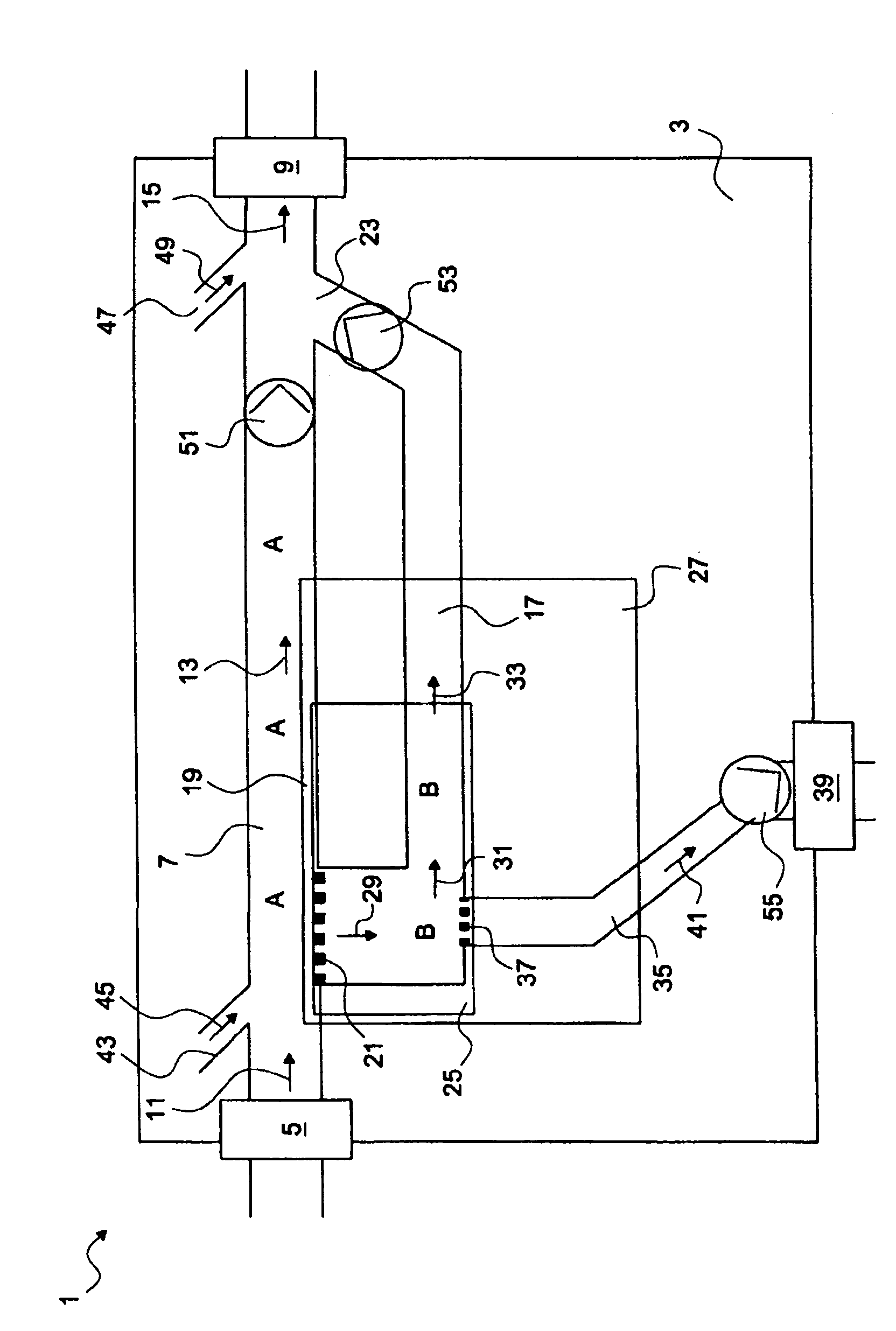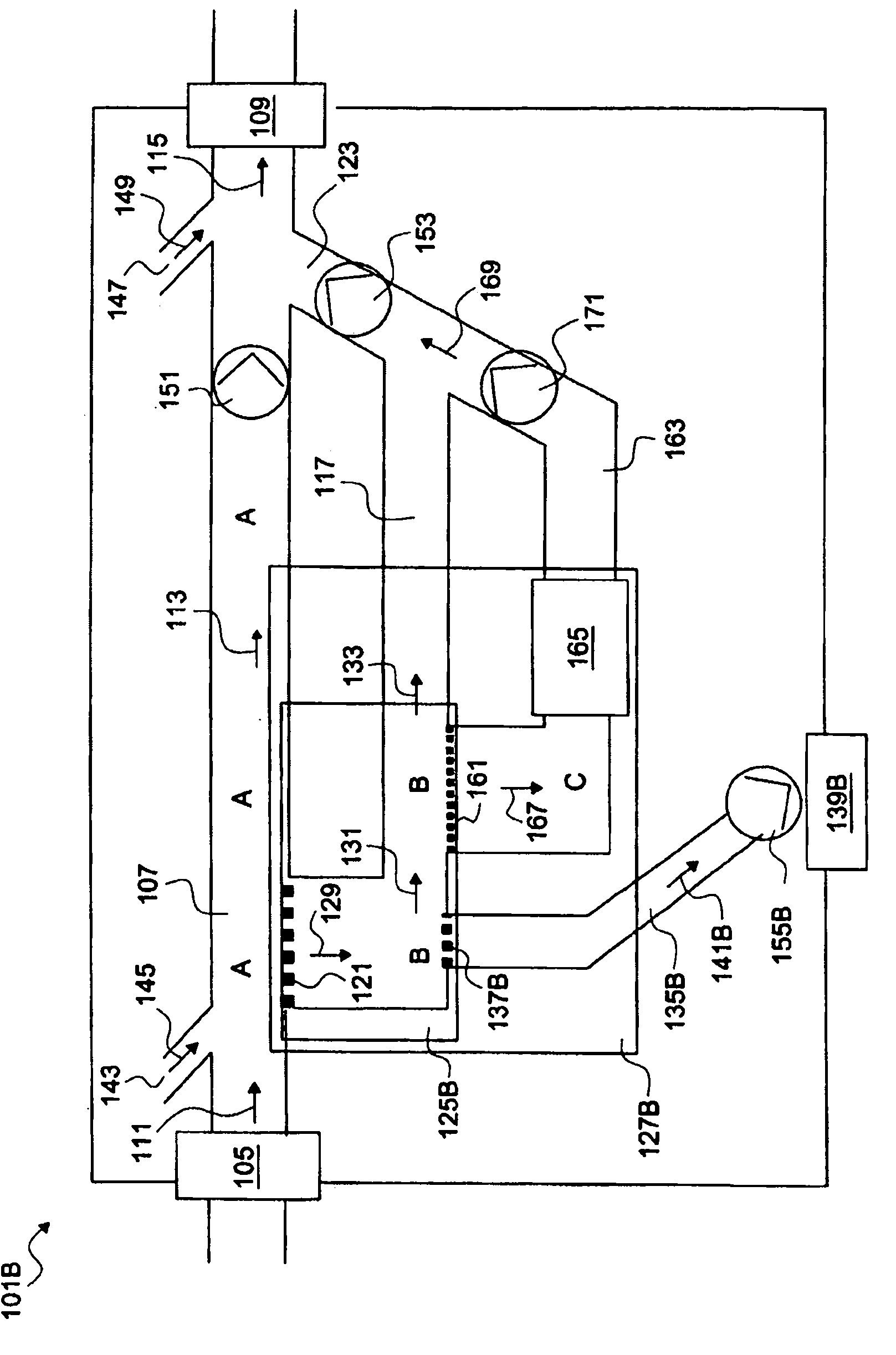Artificial kidney
An artificial kidney and the first fluid technology, applied in the field of artificial kidney, can solve problems such as side effects, health benefits, failure, availability restrictions, etc., and achieve the effect of health improvement
- Summary
- Abstract
- Description
- Claims
- Application Information
AI Technical Summary
Problems solved by technology
Method used
Image
Examples
Embodiment Construction
[0060] figure 1 A first embodiment of the artificial kidney 1 is schematically shown. It is shown with a housing 3 which may be in tabletop form, wearable on the patient or alternatively implantable in the patient. The housing has a first sterile fluid connection 5 for receiving blood "A" from the patient. The first fluid pathway 7 extends from the first fluid connection 5 to a second sterile fluid connection 9, from which blood "A" can re-enter the patient's blood vessel. The first fluid connection 5 defines the upstream end of the first fluid passage 7 and the second fluid connection 9 defines the downstream end of the first fluid passage 7 . The direction of blood flow "A" is indicated by arrows 11 , 13 , 15 . This blood stream "A" contains, inter alia, blood cells, proteins, creatinine, urea, electrolytes and water. The second fluid passage 17 extends from the first fluid passage 7 from an upstream location 19 and is in fluid communication with the first fluid passage ...
PUM
 Login to View More
Login to View More Abstract
Description
Claims
Application Information
 Login to View More
Login to View More - R&D
- Intellectual Property
- Life Sciences
- Materials
- Tech Scout
- Unparalleled Data Quality
- Higher Quality Content
- 60% Fewer Hallucinations
Browse by: Latest US Patents, China's latest patents, Technical Efficacy Thesaurus, Application Domain, Technology Topic, Popular Technical Reports.
© 2025 PatSnap. All rights reserved.Legal|Privacy policy|Modern Slavery Act Transparency Statement|Sitemap|About US| Contact US: help@patsnap.com



